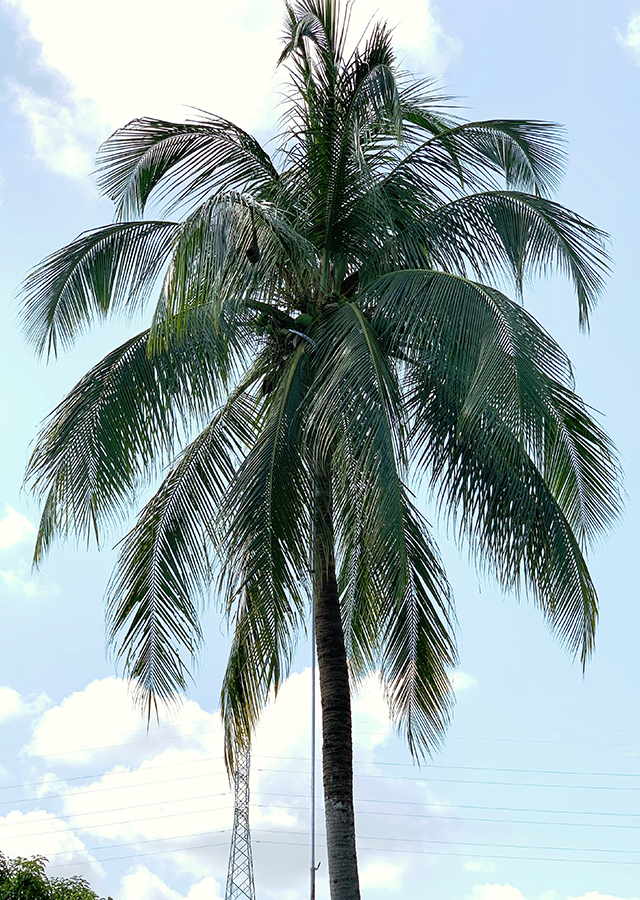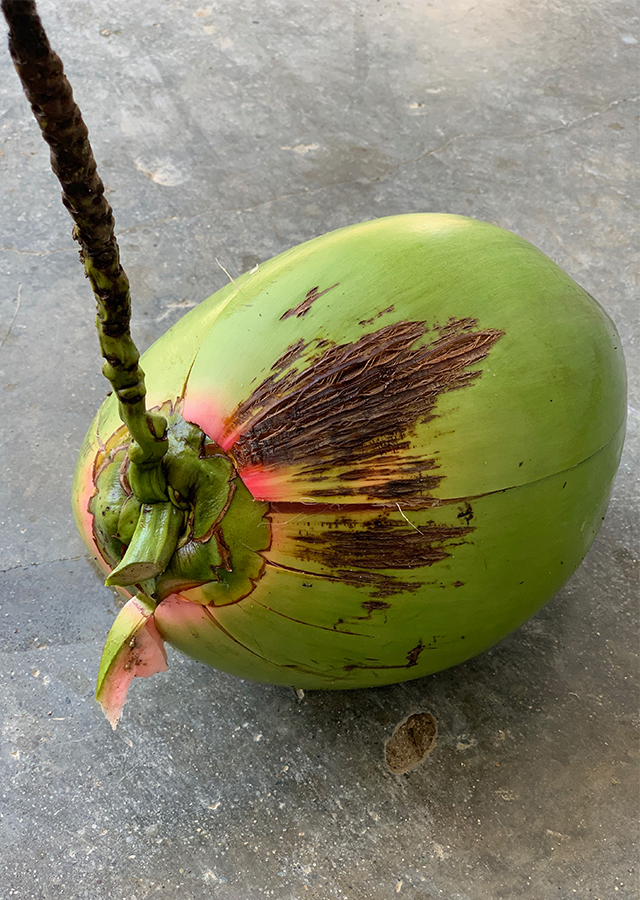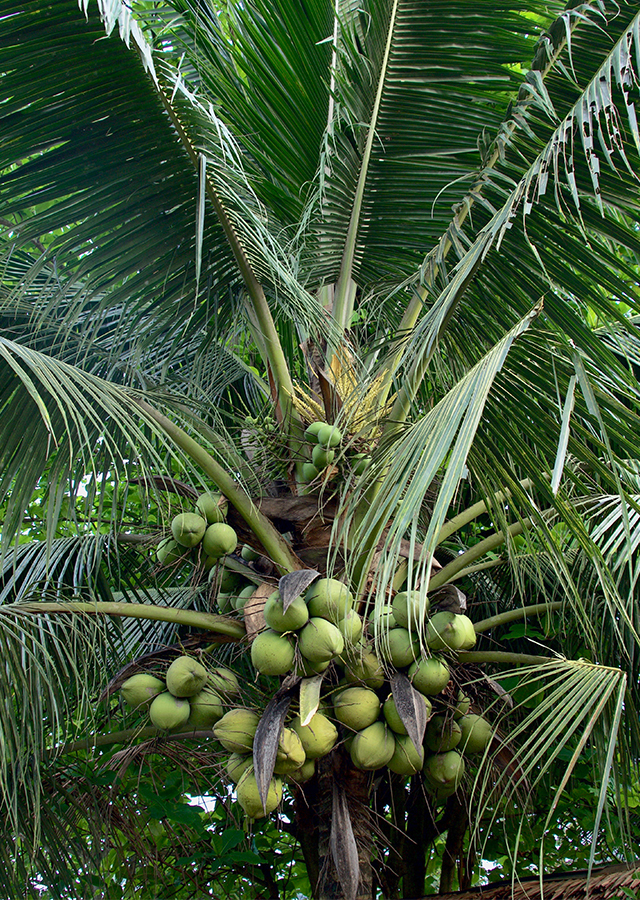Traditional Herbs from Cocos nucifera
diarrhea_and_nausea
- Prepare \u00bd glass young coconut water, \u00bd tsp salt, \u00bd glass boiling water.
- Mix all ingredients, stir until dissolved.
- Drink every 2 hours until diarrhea stops."] ,"pembuatan_v_c_o_virgin_coconut_oil
- Prepare the old coconut, then grate it and squeeze the flesh.
- Mixer coconut milk until \u00b1 20-30 minutes (medium speed). Pour into a transparent container. Let stand \u00b1 24 hours.
- After the coconut milk has broken down/separate the dregs, water and oil, slowly take the dregs at the top before the oil. then place it in the filter container, continue until the oil runs out/gets close to the water.
- Let the oil drip little by little until all that is in the filter is used up,\u00a0Repeat filtering 3 times.
What is Cocos nucifera Looks like??



Parts of Cocos nucifera that could be used
- Leaves
- Flowers
- Fruit
- Roots
- Fruit Water
Cocos nucifera Distribution
It is thought to originate from South America, cultivated around the Andes Valley in Colombia, South America since thousands of years before Christ. Other records state that coconuts come from South Asia or perhaps the West Pacific. Coconut has been known as a plant with many uses. Used as an ornamental plant, medicine, cooking spice, vegetable, ingredient for making soap, and crafts.
Agroecology of Cocos nucifera
This plant is often found in tropical areas. Grows at altitudes ranging from the seashore to 600 m above sea level. Likes areas with rainfall of 1,300-2,300 mm/year, well-drained soil, minimum sunshine duration of 120 hours/month, intolerant of shade, air temperature 20-27 °C, soil pH 6.5-7.5.
Morphology of Cocos nucifera
- Fibrous roots, also have root hairs.
- Stems are straight, cylindrical, unbranched, without cambium, slender, gray in color, with a grooved or ringed pattern.
- Compound leaves, yellowish green. Leaflets are shaped lanceolate, 50-150 cm long.
- Flowers cream to yellow, monoecious, emerge from the leaf axils.
- Fruit green, large, middle part stringy, inner skin (shell) hard, filled with endosperm fluid, white flesh.
Cultivation of Cocos nucifera
- Propagate using the fruit as seed. Good seeds, 4/5 parts with brown skin, husks not injured, smooth, if shaken you can hear a loud sound.
- Seedbed (polybag) for 6-12 months, after 6 leaves, height 90-100 cm, move to the field. Cutting the roots out of the polybag is done 2-3 days later.
Cocos nucifera, more details :
Chemical Content of Cocos nucifera
Cytokinin, auxin, gibberellins (GAs), amino acids, terpenoids, alkaloids, resins, glycosides, steroids, lauric acid, myristic acid, caproic acid, capryllic acid, capric acid, oleic acid.
Benefits of Cocos nucifera
Treats oral and dental disorders, neutralizes toxins, controls blood pressure, reduces fever, treats burns, scabies, eczema, worms, diarrhea, reduces nausea, increases good cholesterol (HDL) levels.
Simplisia of Cocos nucifera
Information not yet available.
Another Facts for Cocos nucifera :
Synonym of Cocos nucifera
Calappa nucifera (L.) KuntzeCocos indica RoyleCocos mamillaris Blanco
Habitus of Cocos nucifera
Palm. Annual palm, reaching 10-14 m in height
Habitat of Cocos nucifera
- Coastal", "Roadside", "Land



No comments:
Post a Comment